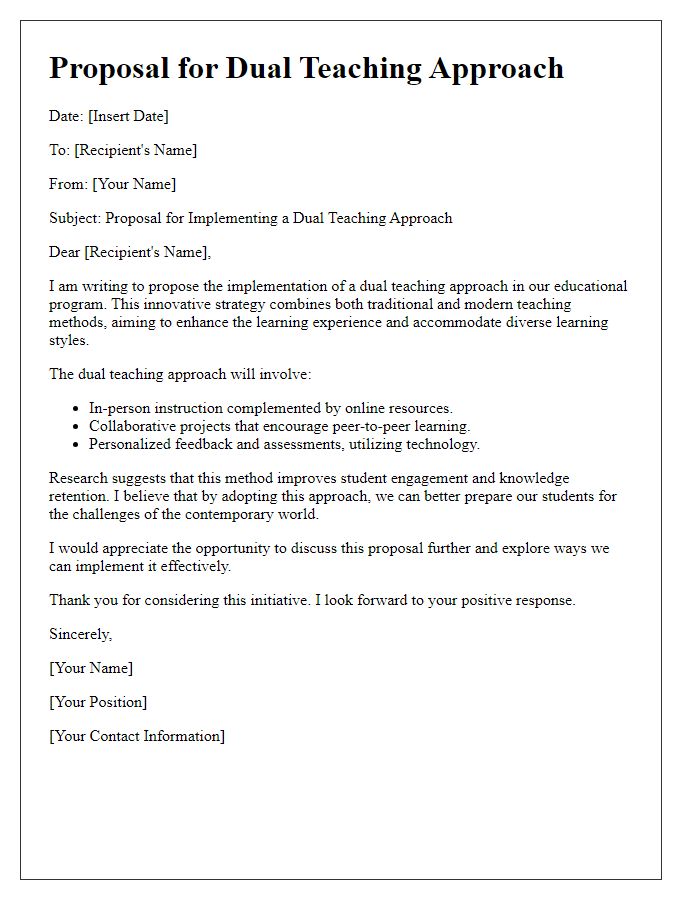Are you considering a collaborative approach to enhance your teaching and provide a more enriched learning experience for your students? Co-teaching partnerships can offer a unique opportunity for educators to share strategies, resources, and insights, ultimately benefiting every classroom participant. By merging diverse skills and perspectives, co-teaching fosters a supportive environment that encourages student engagement and achievement. If you're curious about how to effectively implement this model, read on to discover practical tips and essential steps for a successful co-teaching partnership!

Introduction and Purpose
In an educational landscape increasingly focused on personalized learning, establishing a co-teaching partnership can significantly enhance the learning experience for students. Co-teaching--particularly in diverse classroom settings found in public schools--encourages collaboration between educators, leveraging individual strengths and expertise. This partnership aims to foster inclusive teaching strategies, ensuring that students with varying abilities, including those with learning disabilities, can thrive in an enriching environment. Pooling resources and combining pedagogical approaches, such as team teaching and parallel teaching, can lead to improved academic outcomes. The ultimate goal is to create a supportive and dynamic classroom atmosphere that caters to each student's unique learning style and needs.
Goals and Objectives
A co-teaching partnership aims to enhance instructional delivery and improve student outcomes through collaborative strategies. The primary goal involves leveraging diverse teaching styles and expertise to cater to varied learning modalities, ultimately fostering an inclusive classroom environment. Specific objectives include improved student engagement through co-created lesson plans, increased academic achievement indicated by standardized test scores, and enhanced social interaction among students, promoting teamwork and communication skills. Professional development sessions, such as workshops on co-teaching models and feedback mechanisms, will also be fundamental in refining teaching practices and ensuring a continuous cycle of improvement in pedagogical strategies.
Roles and Responsibilities
A co-teaching partnership in educational settings involves collaborative efforts between educators to enhance student learning experiences. Each educator typically assumes specific roles; for example, a lead teacher often focuses on curriculum development and instructional strategies while a co-teacher may specialize in supporting diverse learners, including students with disabilities and English language learners. Shared responsibilities in co-planning lessons, assessing student progress, and implementing differentiated instruction are vital for effective co-teaching. Collaboration occurs in various formats, such as co-facilitating group discussions or conducting joint assessments, fostering a classroom environment that promotes inclusivity and engagement. Note: The roles of lead teacher and co-teacher can vary depending on individual expertise and classroom dynamics. Examples of successful co-teaching models include the one teach, one assist approach and the station rotation model, which encourage synergy in instruction.
Benefits and Resources
Co-teaching partnerships offer substantial benefits, enhancing educational outcomes for students through shared expertise and diverse instructional strategies. Effective collaboration between educators can lead to increased student engagement in classrooms, fostering a supportive environment where individual learning needs are met. Resources such as professional development workshops and co-planning time allow teachers to align curricula, share teaching methods, and analyze student data collaboratively. The integration of technology tools, like Google Classroom, can facilitate seamless communication and shared access to materials. Initiatives like the Co-Teaching Institute create networking opportunities for educators, promoting best practices and innovative techniques. This collaboration not only strengthens teaching practices but also fosters a sense of community and shared responsibility for student success.
Communication and Evaluation Methods
A co-teaching partnership proposal emphasizes essential communication and evaluation methods to enhance collaborative teaching efforts between educators. Regular meetings, preferably bi-weekly (every two weeks), foster open dialogue, ensuring both partners discuss lesson plans, student progress, and any concerns. Utilizing digital platforms like Google Classroom or Microsoft Teams can facilitate ongoing communication, allowing real-time feedback and resource sharing. Evaluating student outcomes through formative assessments, such as quizzes (short tests) and observations, will guide instructional adjustments. Additionally, the implementation of reflective practices, where educators review teaching strategies and student engagement, promotes continual improvement. Surveys collected at the end of each semester provide valuable feedback from students regarding the co-teaching experience, enhancing future collaboration. Clear expectations for both teaching and assessment roles must be established to ensure equitable participation and consistency throughout the academic term.













Comments